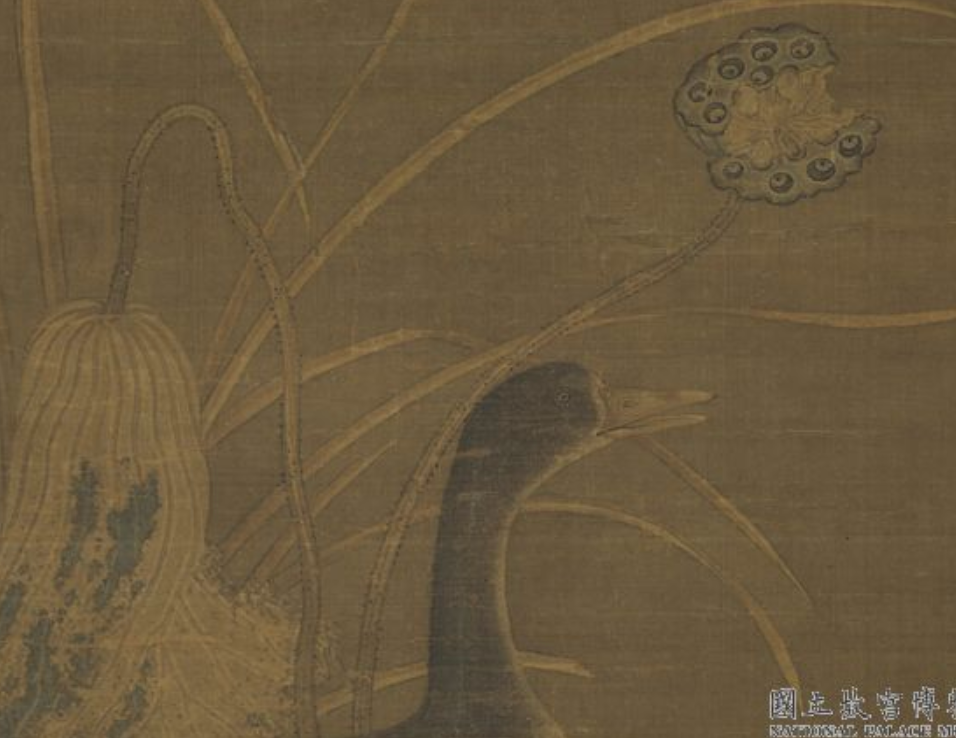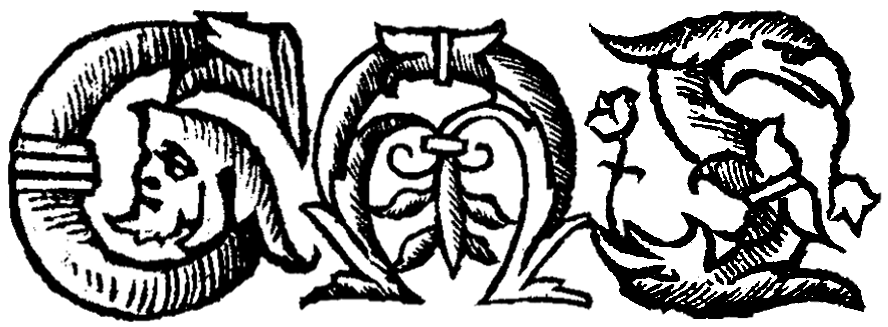To the tune “On Top of the Phoenix Terrace, Recalling Flute Music”—“The incense chills in the golden lion” | 鳳凰臺上憶吹簫 · 香冷金猊

Detail from 宋人秋荷野鳧圖(Autumn) 軸, Anonymous, National Palace Museum, Accession Number: K2A000205N000000000PAA [Public Domain]
Read the text (PDF)
Introduction to the Text
This ci expresses the poet-speaker’s sorrow at the departure of her lover. It may be inspired by Li Qingzhao’s separations from her husband due to his work. The poet’s vivid portrayal of listlessness (a jewellery box gathering dust, incense chilling in the holder) suggests that stasis is produced when love is suspended.
The ci genre of Chinese poetry first emerged in the Sui dynasty (581-619), was further developed in the Tang dynasty (618-907) and matured in the Northern Song dynasty (960-1127). Ci is usually translated into English as “song lyrics”. This is because ci were composed by poets to fit pre-existing tunes. The number of lines, the line lengths, and the tonal and rhythmic patterns of ci vary with the tunes, which number in the hundreds. One common occasion for composing ci would be a banquet: song lyrics would be scribbled down by guests and then sung by musical performers as entertainment. Other occasions for composing and enjoying ci would be more casual: the poet might sing the lyrics to himself at home or while travelling (many ci poets were civil servants of the Imperial Court and often had to travel great distances to carry out their work). Sometimes the lyrics would be sung by ordinary people in the same way as folk songs. This oral and musical quality sets it apart from other genres of poetry in China during the same period, which were largely written texts with more elevated objectives. There are two main types of ci : wǎnyuē (婉 约, “graceful”) and háofàng (豪放, “bold”). The wǎnyuē subgenre primarily focuses on emotion and many of its lyrics are about courtship and love, while the háofàng subgenre often deals with themes that were considered more profound by contemporary audiences, such as ageing and mortality, or the rewards and disappointments of public service.
Li Qingzhao was probably one of the most prominent female poets in Imperial China. Born into an elite family of imperial bureaucrats, Li Qingzhao aspired to become a writer even though literature was considered a male domain. She quickly gained fame for her poetic talent and became not only a celebrated composer of ci but also an important critic of the genre. In her view, the male poets composing lyrics for female singers struggled to convey these women’s thoughts and voices convincingly. In her song lyrics, Li Qingzhao offers the modern reader something rare and precious: the inner world of women in medieval China, as imagined by a woman poet. Her songs are often considered to be among the most affecting of the genre.
In 1127, when Li Qingzhao was in her forties, the capital city of the Song dynasty (present-day Kaifeng)—the city where Li Qingzhao lived—was conquered by the Jin dynasty in the Jin-Song Wars, along with the northern half of the Song dynasty’s territory. The surviving members of the dynasty consolidated their regime in the south, establishing a new capital city, first in Nanjing, then in Lin’an (present-day Hangzhou). The conquest of Kaifeng marked the end of the Northern Song dynasty and the beginning of the Southern Song dynasty: two distinct eras in the political history of China, and two distinctive periods in Li Qingzhao’s own poetry. Following the invasion of Kaifeng, she moved first to Nanjing and then to Lin’an, where she spent the remaining decades of her life; her husband died in 1129. In contrast to the love themes of her earlier ci, much of her later poetry is concerned with the sorrow of her forced migration and her personal loneliness in her new surroundings.
About this Edition
The original text of this ci is based on the edition by Tang Guizhang 唐圭璋 ( Quan Song Ci 全宋詞, vol 1. Beijing: Zhonghua shu ju, 1965). Punctuation follows the edition. Since ci poetry rarely includes personal pronouns, and gender-differentiated pronouns did not exist in Classical Chinese of this period, the gender of the speaker as well as their perspective (e.g. first-, second- or third-person) must often be deduced by the translator from context.
Further Reading
Chang, Kang-i Sun. The Evolution of Tz’u Poetry: from Late Tang to Northern Sung. Princeton UP, 1980.
- A standard survey of the early history of Chinese song lyrics (romanized as both ci and tz’u).
Egan, Ronald. “The Song Lyric”. The Cambridge History of Chinese Literature, vol. 1, edited by Stephen Owen, Cambridge UP, 2010, pp. 434-452.
- An overview of the genre.
The Works of Li Qingzhao. De Gruyter, 2019, pp. 94-198.
- A bilingual edition, with Chinese and English translations on facing pages.
Owen, Stephen. Just a Song: Chinese Lyrics from the Eleventh and Early Twelfth Centuries. Asia Center, Harvard UP, 2019.
- A recent new history of the genre.
Tang, Guizhang 唐圭璋, editor. Quan Song Ci 全宋詞. Zhonghua shu ju, 1965. 5 vols.
- A comprehensive edition of ci from the Song dynasty and the source text for the ci in this collection (introductions and annotations are in Chinese).
To the tune “On Top of the Phoenix Terrace, Recalling Flute Music”—“The incense chills in the golden lion” | 鳳凰臺上憶吹簫 · 香冷金猊
鳳凰臺上憶吹簫
香冷金猊,
被翻紅浪,
起來慵自梳頭。
任寶奩塵滿,
5 日上簾鉤。
生怕離懷別苦,
多少事、
欲說還休
新來瘦,
10 非干病酒,
不是悲秋。
明朝,
這回去也,
千萬遍陽關,
15 也則難留。
念武陵人遠,
煙鎖秦樓。
唯有樓前流水,
應念我、
20 終日凝眸。
凝眸處,
從今又添,
一段新愁。
To the tune “On Top of the Phoenix Terrace, Recalling Flute Music”
The incense chills in the golden lion;
the quilt is a sea of red waves.
I get up, too listless to comb my hair.
I let my jewel box gather dust;
5 sunlight climbs up the curtain hook.
I only fear the parting pains and farewell bitterness;
how much has happened?
I am about to say but refrain.
Recently, I have slimmed down.
10 It has nothing to do with sickness from drinking,
or the autumn sorrow.
Tomorrow,
this time he will surely go.
Even if I sing the “Yangguan” tune ten thousand times,
15 it is still hard to make him stay.
I will yearn for my loved one faraway.
Mists will lock up the Qin tower;
only the running water in front of the tower,
will remember me
20 staring at it all day.
At the spot where I stare,
from now on, there will be
another layer of new sorrow.
Critical Notes
Line 1: The “golden lion” refers to an incense holder in the shape of a lion.
